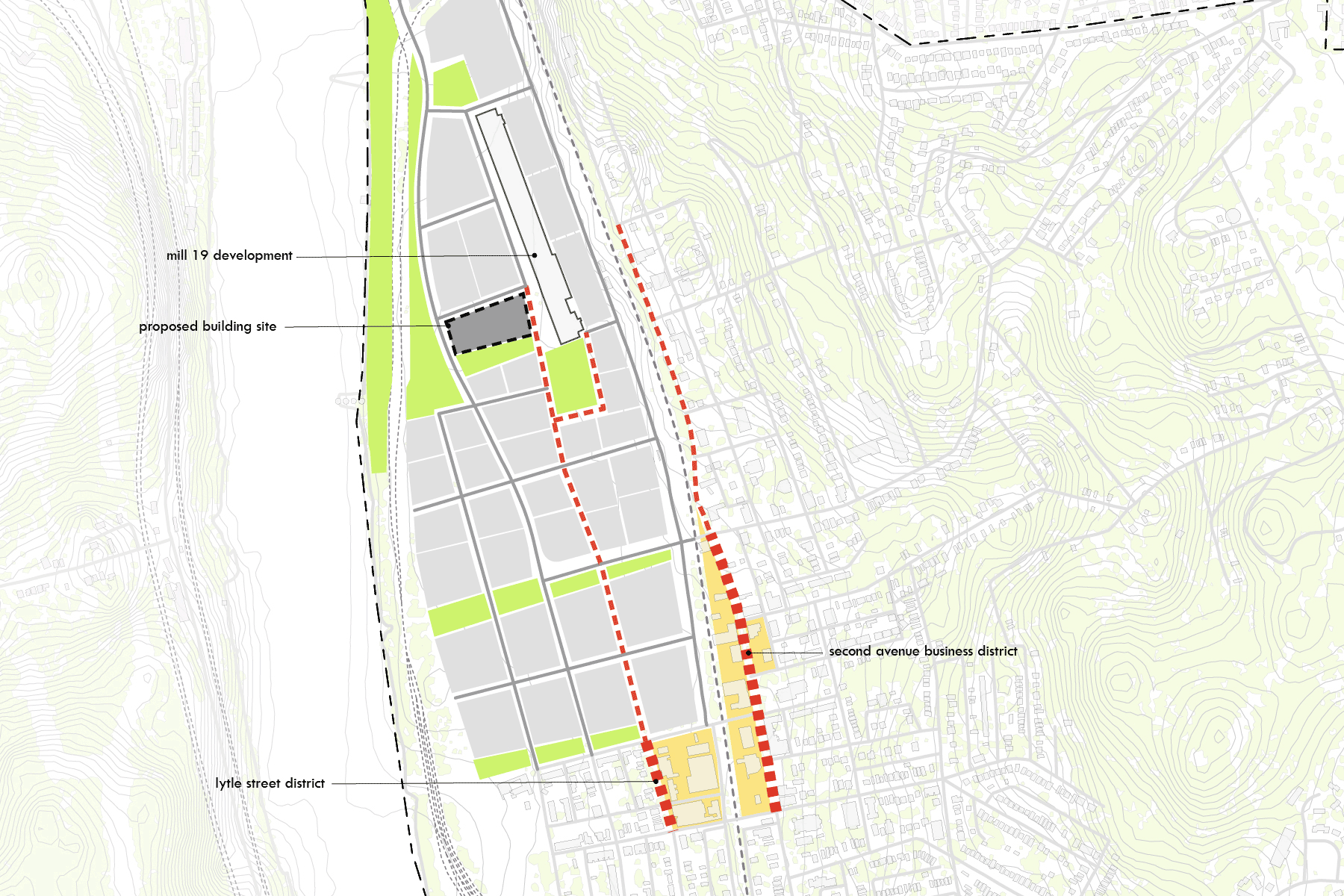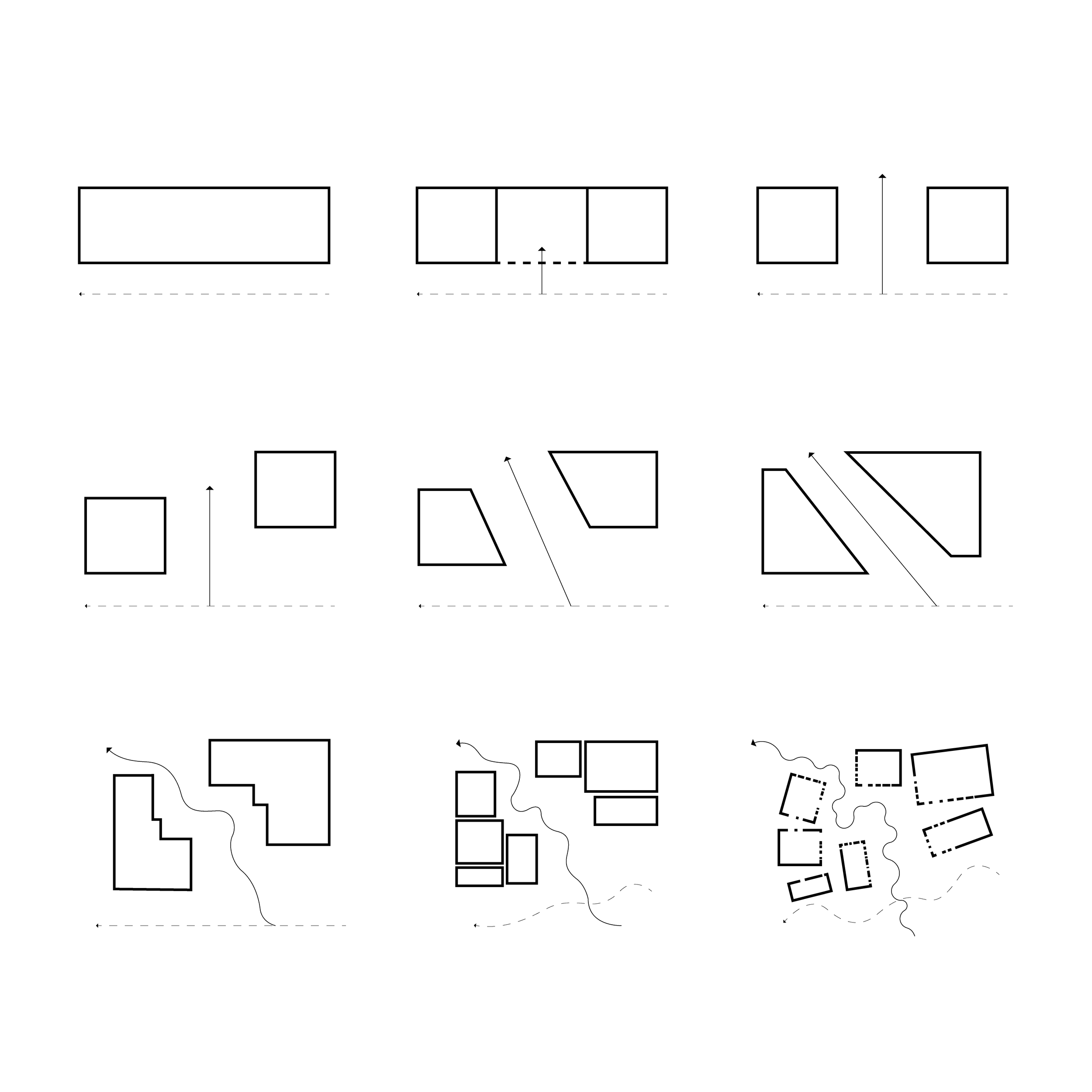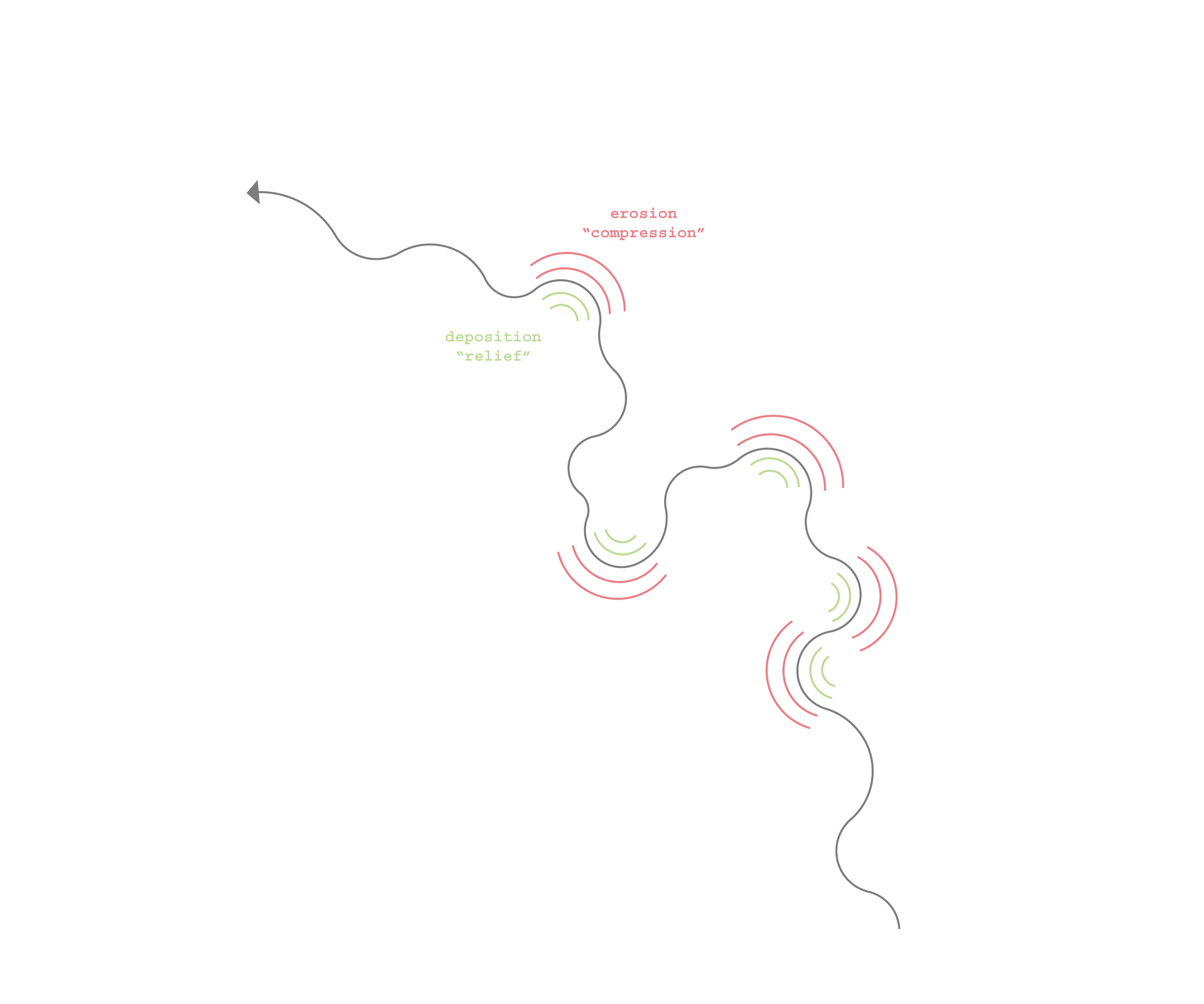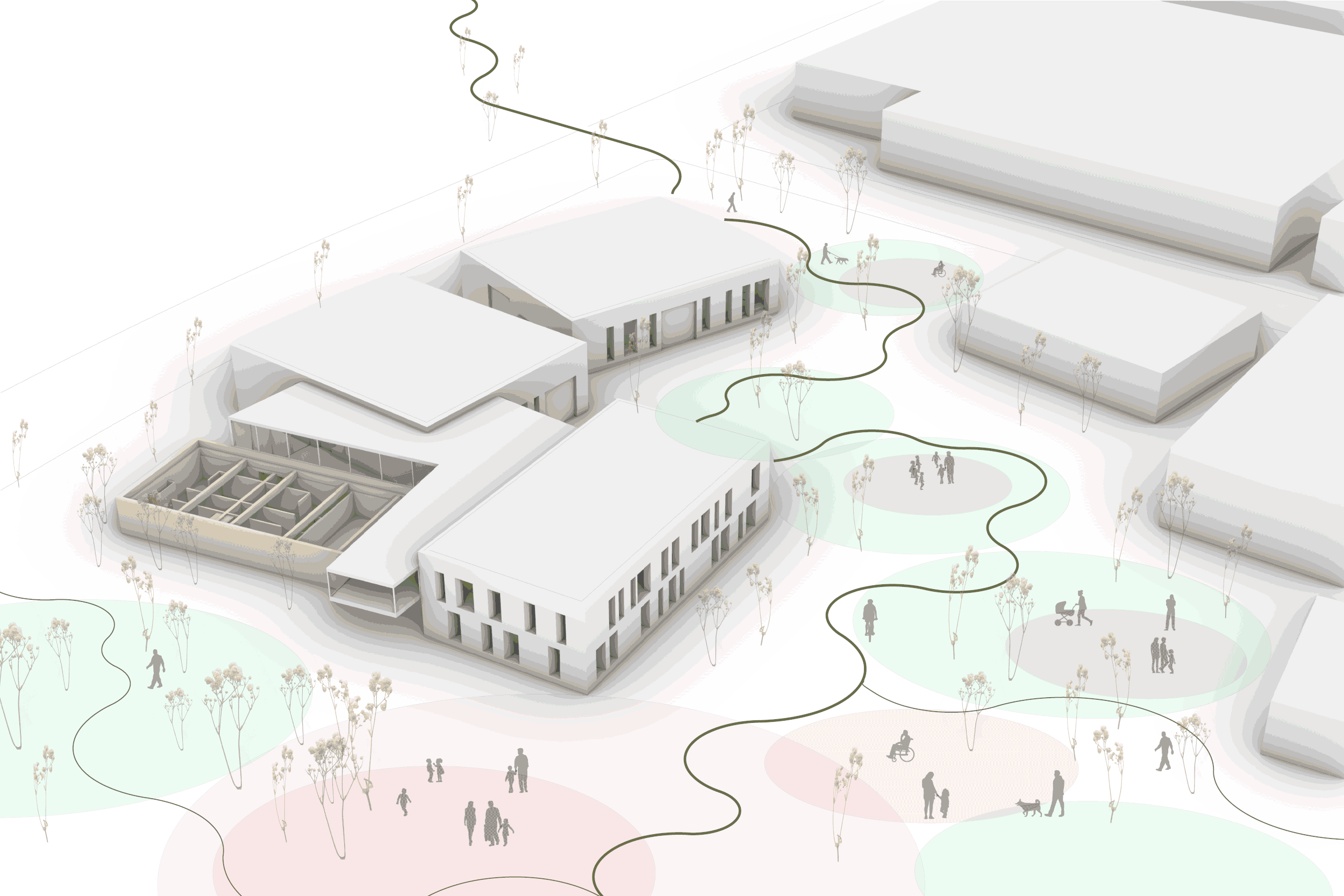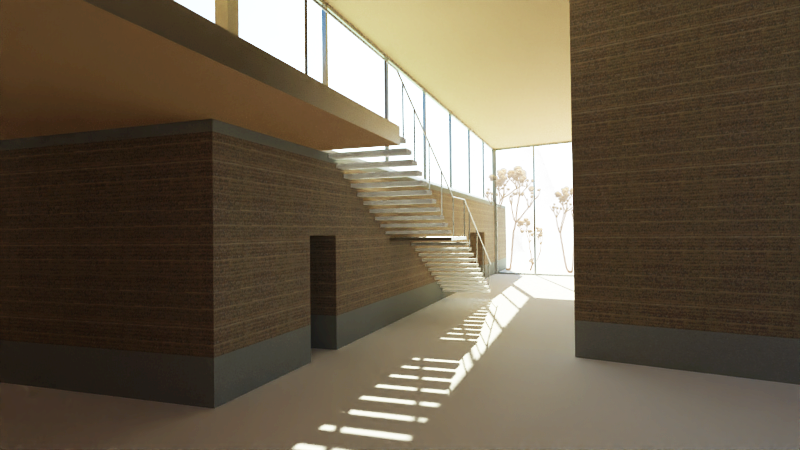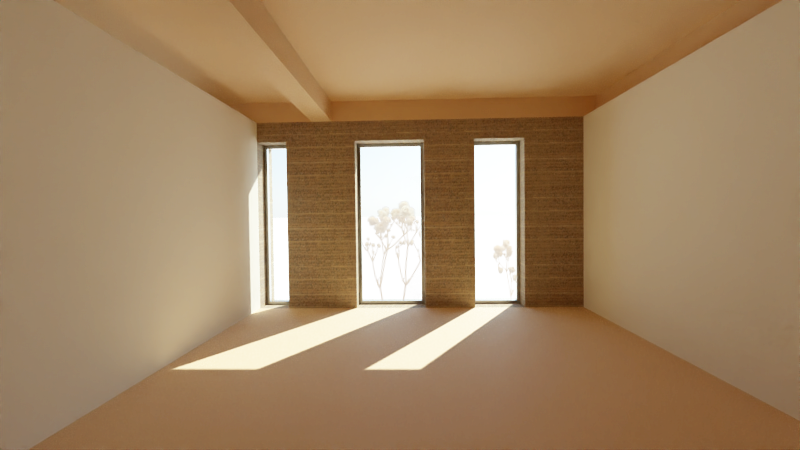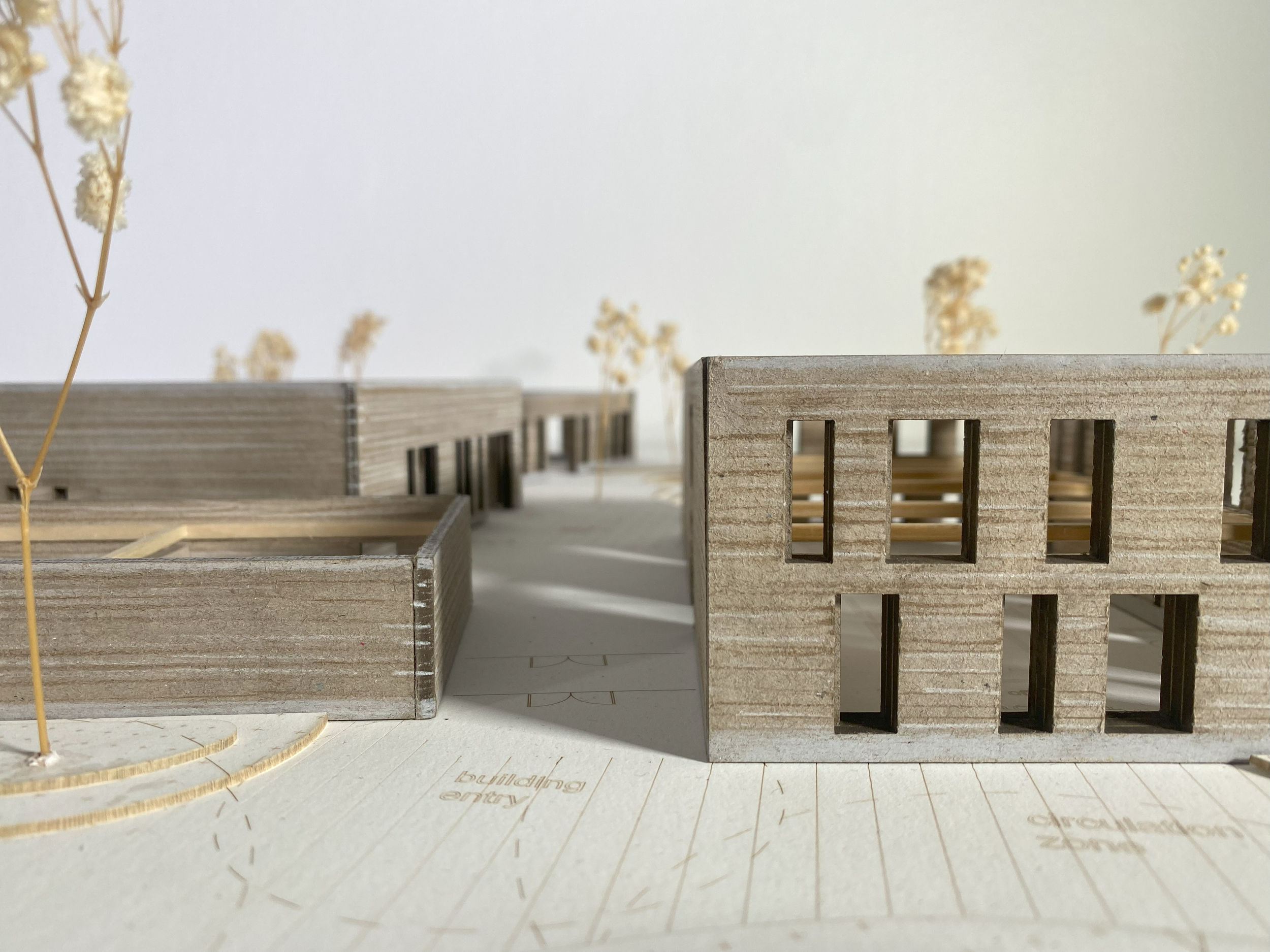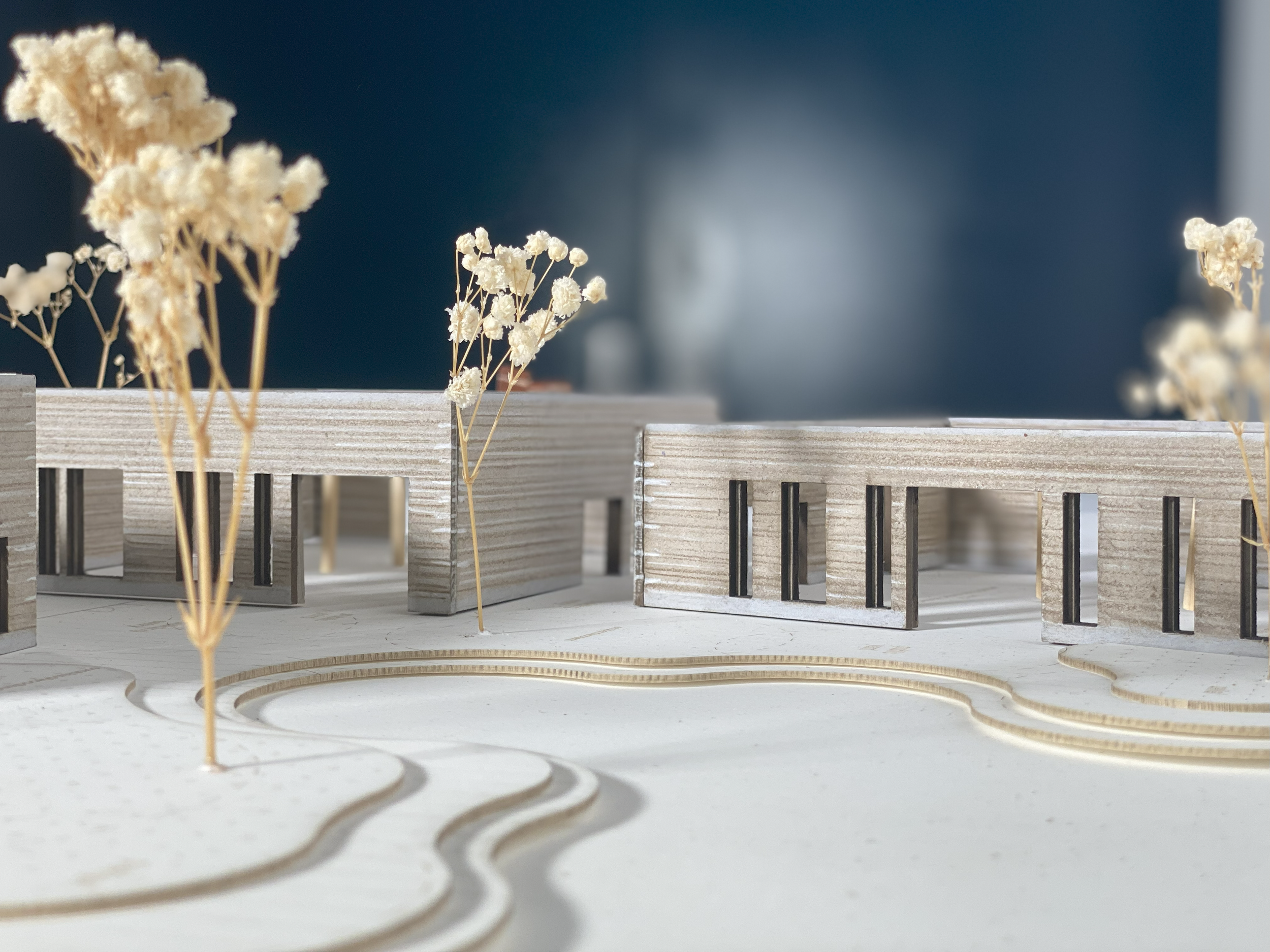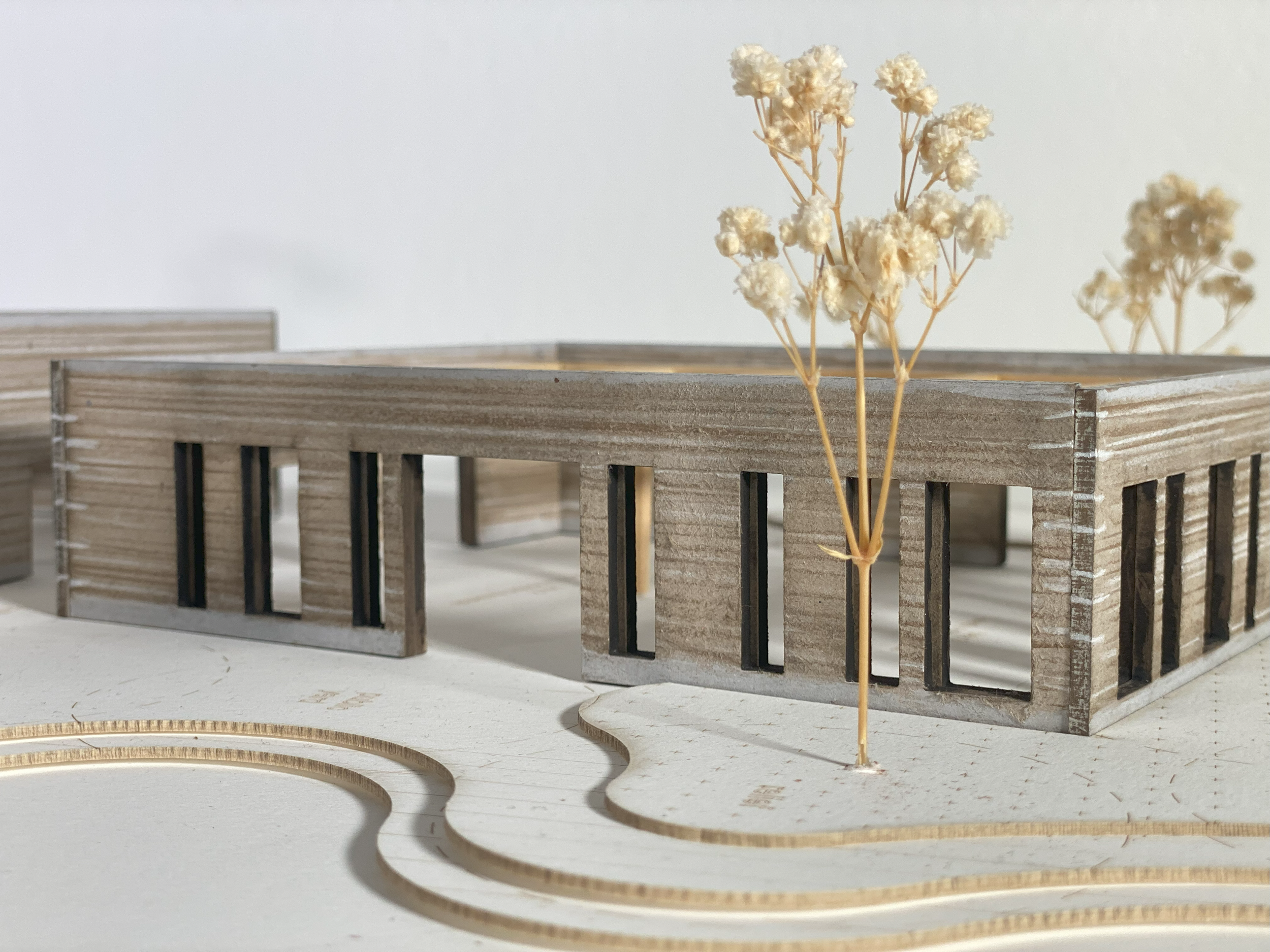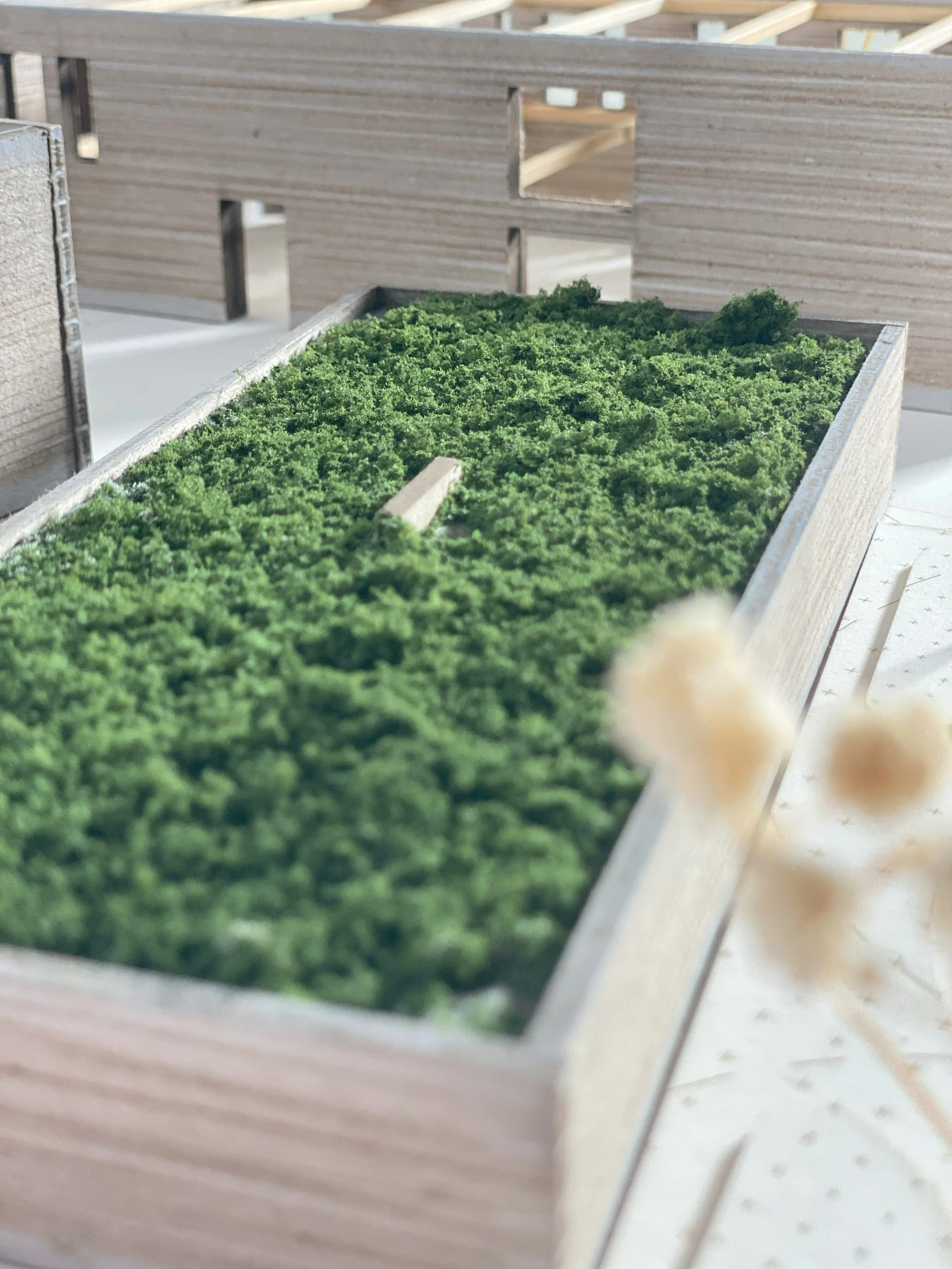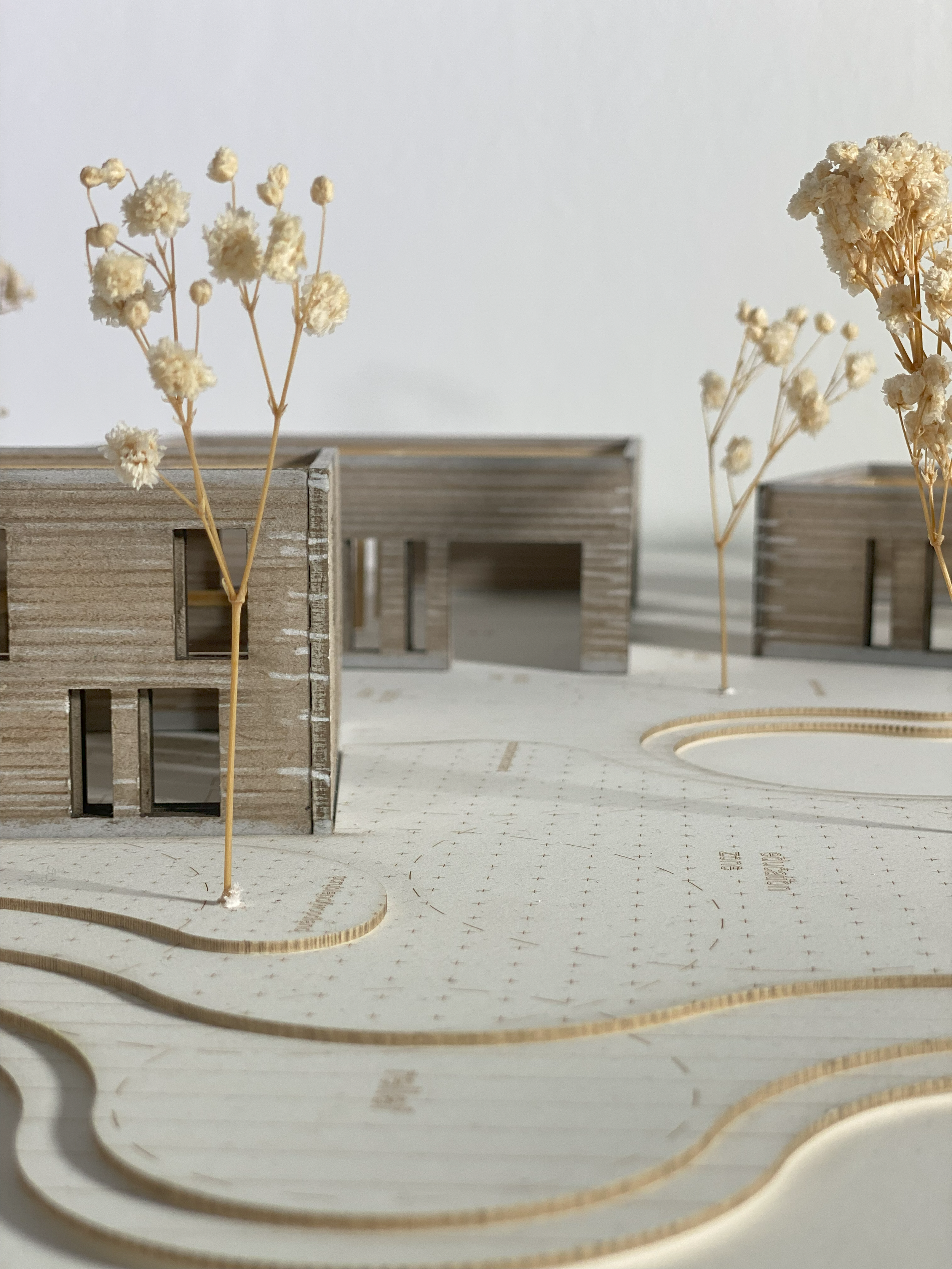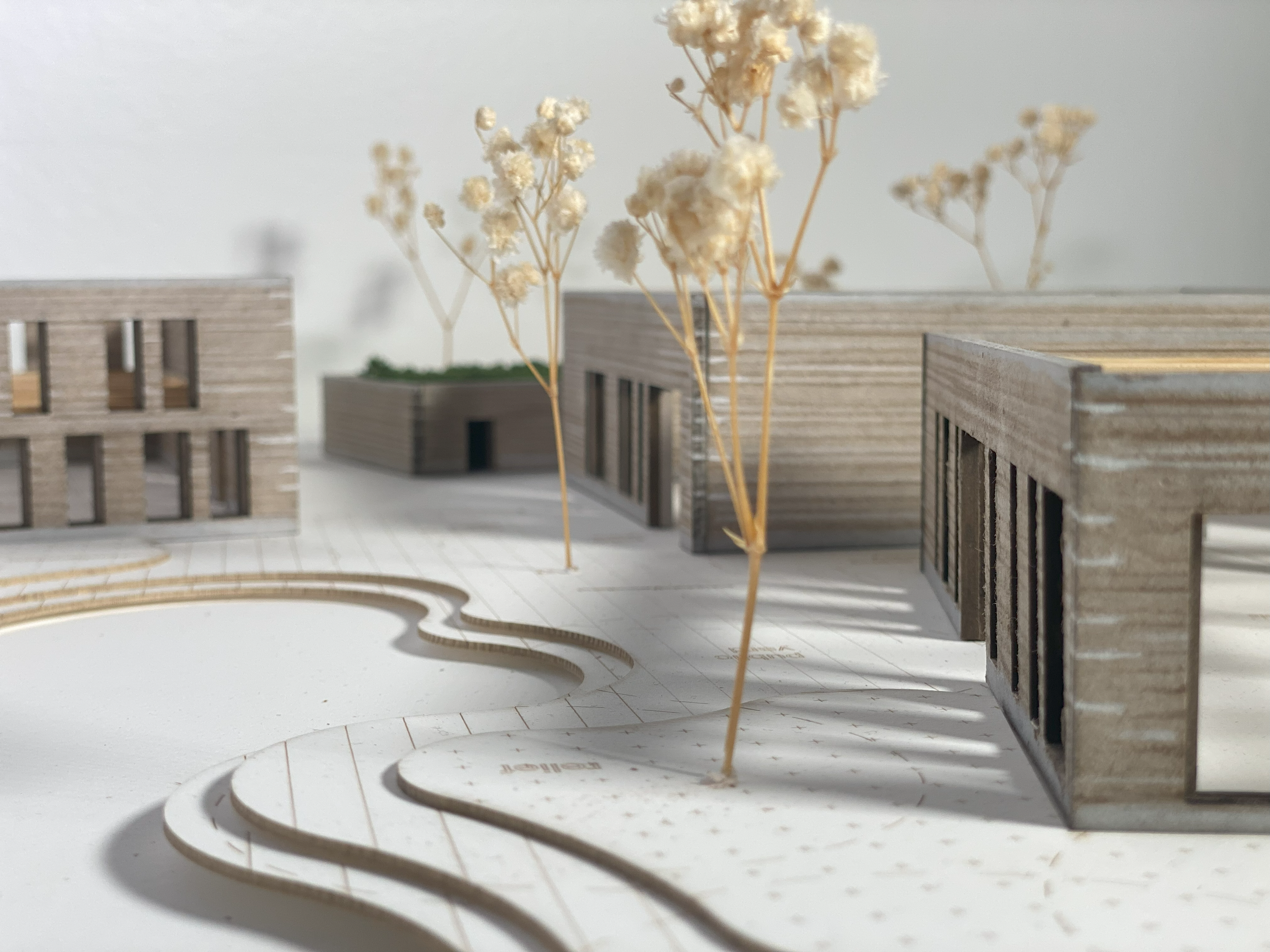
MAKING: Visible
School: Harvard GSD | Course: Material Embodiment - Logics for Post-Carbon Architectures | Semester: Spring 2025
For centuries before the steel era, people moved between Pittsburgh’s hills and the river; Indigenous tribes, settlers, and workers. The river has long shaped life and land, acting as a draw and a connector. During the steel boom, movement intensified between Hazelwood and the site of Mill 19, with steps and streets that still remain. But since the mill’s closure, that flow and connection to the river have been lost.
This project asks: how can we design with the logic of a river, reconnecting a fragmented community, restoring ecologies, and building with materials that reflect time and place? The buildings use prefabricated rammed earth blocks, layered like river sediment to evoke the memory of the Monongahela’s past. These blocks allow for quick assembly, future reuse, and adaptability. Their modularity also informs the façade’s design: voids created by strategic subtraction, like erosion, allow for light, air, and views into the central green corridor. The proposed building, like the land, tells a story of flow: what has moved through, and what might still.
Meandering Materialities: A Living Edge for Hazelwood Green is a framework for thinking across timescales.
It attempts to weave together ideas for Material Embodiment, a part of this studio’s title; the memory of the land, the agency of materials, and the future needs of the community.
The Hazelwood community, once a thriving hub of Pittsburgh’s steel industry, is now in the midst of a significant transition toward sustainability, equity, and innovation. My project ties into this transformation by reimagining Hazelwood Green as a site where post-industrial landscapes are reclaimed through regenerative design and public-facing small-scale manufacturing. By drawing inspiration from the meandering Monongahela River, the project integrates architectural and landscape strategies that support community engagement, local material supply chains, and long-term adaptability, aligning with Hazelwood’s ongoing efforts to build a resilient and inclusive future.



